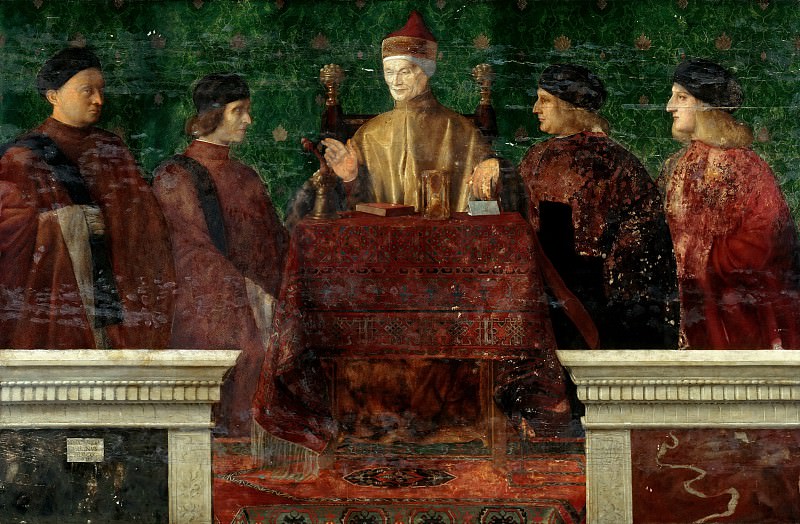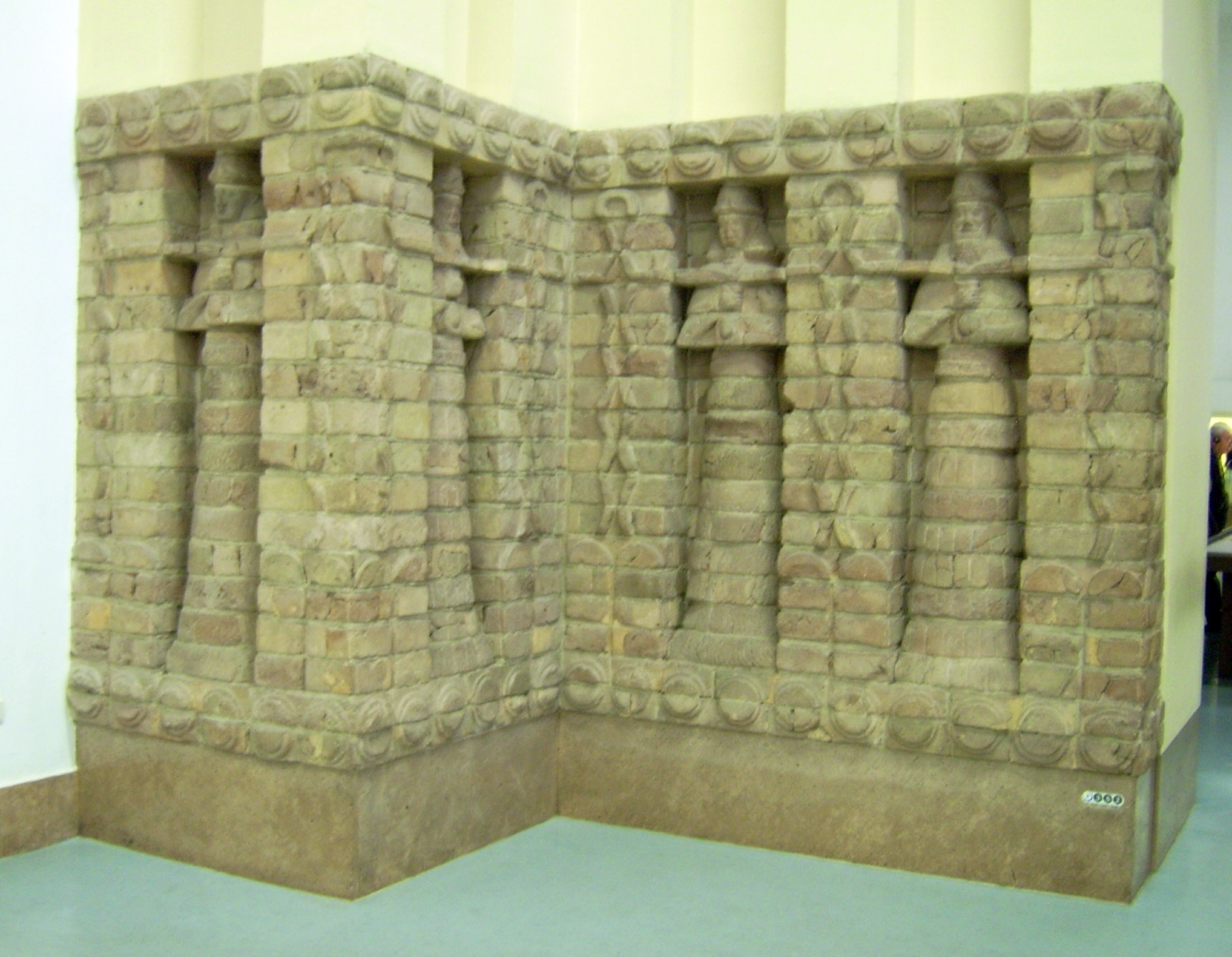|
Chaldean Dynasty
The Chaldean dynasty, also known as the Neo-Babylonian dynasty and enumerated as Dynasty X of Babylon, was the ruling dynasty of the Neo-Babylonian Empire, ruling as kings of Babylon from the ascent of Nabopolassar in 626 BC to the fall of Babylon in 539 BC. The dynasty, as connected to Nabopolassar through descent, was deposed in 560 BC by the Aramean official Neriglissar (560–556 BC), though he was connected to the Chaldean kings through marriage and his son and successor, Labashi-Marduk (556 BC), might have reintroduced the bloodline to the throne. The final Neo-Babylonian king, Nabonidus (556–539 BC), was genealogically unconnected to the previous kings, but might, like Neriglissar, also have been connected to the dynasty through marriage. History The term "Chaldean dynasty", and the corresponding "Chaldean Empire", an alternate historiographical name for the Neo-Babylonian Empire, derives from the assumption that the dynasty's founder, Nabopolassar, was of Chaldean o ... [...More Info...] [...Related Items...] OR: [Wikipedia] [Google] [Baidu] |
|
|
Royal Family
A royal family is the immediate family of kings/queens, emirs/emiras, sultans/ sultanas, or raja/ rani and sometimes their extended family. The term imperial family appropriately describes the family of an emperor or empress, and the term papal family describes the family of a pope, while the terms baronial family, comital family, ducal family, archducal family, grand ducal family, or princely family are more appropriate to describe, respectively, the relatives of a reigning baron, count/earl, duke, archduke, grand duke, or prince. However, in common parlance members of any family which reigns by hereditary right are often referred to as royalty or "royals". It is also customary in some circles to refer to the extended relations of a deposed monarch and their descendants as a royal family. A dynasty is sometimes referred to as the "House of ...". In July 2013 there were 26 active sovereign dynasties in the world that ruled or reigned over 43 monarchies. , while there are ... [...More Info...] [...Related Items...] OR: [Wikipedia] [Google] [Baidu] |
|
 |
Neriglissar
Neriglissar (Babylonian cuneiform: ''Nergal-šar-uṣur'' or ''Nergal-šarra-uṣur'', meaning "Nergal, protect the king") was the fourth king of the Neo-Babylonian Empire, ruling from his usurpation of the throne in 560 BC to his death in 556 BC. Though unrelated to previous Babylonian kings, possibly being of Aramean ancestry, Neriglissar was a prominent official and general in the reign of Nebuchadnezzar II (605–562 BC) and became even more influential through marrying one of Nebuchadnezzar's daughters, possibly Kashshaya. Nebuchadnezzar was initially succeeded by his son, Amel-Marduk, but Amel-Marduk's reign only lasted for two years before Neriglissar usurped the Babylonian throne and put him to death. Through his marriage to Nebuchadnezzar's daughter, possibly significantly older than any of the old king's sons, Neriglissar might have represented a less legitimate but more wealthy and well-established faction of the royal family, even if he himself was not part of this f ... [...More Info...] [...Related Items...] OR: [Wikipedia] [Google] [Baidu] |
|
Puqudu
The term Puqudu or Piqudu (or in the Bible, Peqod) refers to a prominent Aramean tribe and its associated region in southernSaggs, H. W. F.The Nimrud Letters 1952: Part III." ''Iraq'', vol. 18, no. 1, 1956, pp. 53. JSTOR. or eastern Babylonia. They lived along the eastern edge of Elam and in the area near UrukArnold, Bill T.Aramean Origins: The Evidence from Babylonia" ''Archiv Für Orientforschung'', vol. 52, 2011, pp. 179–185. JSTOR. and the Tigris. Their tribal name is sometimes spelled with an accent mark as Puqūdu, and the members of the tribe are sometimes referred to as Puqūdian, Puqūdians, or Puqudaeans (e.g. in the Nimrud Letters). Some older publications use Pukud. The Puqudu, known from governmental archives of Assyria, were "prominent between the mid-8th century and 626 B.C.", although their presence is documented in Babylonia at least as early as the ninth century. It is not certain when they migrated into the area. They appear to have been a loosely associated ... [...More Info...] [...Related Items...] OR: [Wikipedia] [Google] [Baidu] |
|
|
Patronymic
A patronymic, or patronym, is a component of a personal name based on the given name of one's father, grandfather (avonymic), or an earlier male ancestor. Patronymics are still in use, including mandatory use, in many countries worldwide, although their use has largely been replaced by or transformed into patronymic surnames. Examples of such transformations include common English surnames such as Johnson (son of John). Origins of terms The usual noun and adjective in English is ''patronymic'', but as a noun this exists in free variation alongside ''patronym''. The first part of the word ''patronym'' comes from Greek πατήρ ''patēr'' "father" ( GEN πατρός ''patros'' whence the combining form πατρο- ''patro''-); the second part comes from Greek ὄνυμα ''onyma'', a variant form of ὄνομα ''onoma'' "name". In the form ''patronymic'', this stands with the addition of the suffix -ικός (''-ikos''), which was originally used to form adjectives with t ... [...More Info...] [...Related Items...] OR: [Wikipedia] [Google] [Baidu] |
|
 |
Political Family
A political family (also referred to as political dynasty) is a family in which multiple members are involved in politics — particularly electoral politics. Members may be related by blood or marriage; often several generations or multiple siblings may be involved. A royal family or dynasty in a monarchy is generally considered to not be a "political family," although the later descendants of a royal family have played political roles in a republic (such as the Arslan family of Lebanon). A family dictatorship is a form of dictatorship that operates much like an absolute monarchy, yet occurs in a nominally republican state. United States In the United States, many political families (having at least two generations serving in political office) have arisen since the country's founding. Presidential Several presidential families produced multiple generations of members who devoted at least part of their working lives to public service. *The Adams family The Adams family wa ... [...More Info...] [...Related Items...] OR: [Wikipedia] [Google] [Baidu] |
|
Ashurbanipal
Ashurbanipal (Neo-Assyrian cuneiform: , meaning "Ashur is the creator of the heir") was the king of the Neo-Assyrian Empire from 669 BCE to his death in 631. He is generally remembered as the last great king of Assyria. Inheriting the throne as the favored heir of his father Esarhaddon, Ashurbanipal's 38-year reign was among the longest of any Assyrian king. Though sometimes regarded as the apogee of ancient Assyria, his reign also marked the last time Assyrian armies waged war throughout the ancient Near East and the beginning of the end of Assyrian dominion over the region. Esarhaddon selected Ashurbanipal as heir 673. The selection of Ashurbanipal bypassed the elder son Shamash-shum-ukin. Perhaps in order to avoid future rivalry, Esarhaddon designated Shamash-shum-ukin as the heir to Babylonia. The two brothers jointly acceded to their respective thrones after Esarhaddon's death in 669, though Shamash-shum-ukin was relegated to being Ashurbanipal's closely monitored vass ... [...More Info...] [...Related Items...] OR: [Wikipedia] [Google] [Baidu] |
|
 |
Nebuchadnezzar (governor Of Uruk)
Nebuchadnezzar (Babylonian cuneiform: ''Nabû-kudurri-uṣur'', meaning "Nabu, watch over my heir"), also spelled Nebuchadrezzar, and most commonly known under the nickname Kudurru, was a governor of the city Uruk in Babylonia under the rule of Ashurbanipal (669–631 BC) of the Neo-Assyrian Empire, appointed after the defeat of Shamash-shum-ukin of Babylon, Ashurbanipal's brother who had rebelled against Assyria, 648 BC. He was likely the son of the high priest Nabonassar. In the reign of Ashurbanipal's son Sinsharishkun (627–612 BC), the grave of Nebuchadnezzar was desecrated, with the perpetrators going so far as dragging his body through the streets of Uruk. This was done as a response to the anti-Assyrian activities of his two sons. In 2007, Assyriologist Michael Jursa identified Nebuchadnezzar as the father of Nabopolassar, the founder of the Neo-Babylonian Empire, who rebelled against Sinsharishkun in 626 BC (this being the anti-Assyrian activities). If Nabopolassar was ... [...More Info...] [...Related Items...] OR: [Wikipedia] [Google] [Baidu] |
 |
Nebuchadnezzar II
Nebuchadnezzar II ( Babylonian cuneiform: ''Nabû-kudurri-uṣur'', meaning " Nabu, watch over my heir"; Biblical Hebrew: ''Nəḇūḵaḏneʾṣṣar''), also spelled Nebuchadrezzar II, was the second king of the Neo-Babylonian Empire, ruling from the death of his father Nabopolassar in 605 BC to his own death in 562 BC. Historically known as Nebuchadnezzar the Great, he is typically regarded as the empire's greatest king. Nebuchadnezzar remains famous for his military campaigns in the Levant, for his construction projects in his capital, Babylon, and for the important part he played in Jewish history. Ruling for 43 years, Nebuchadnezzar was the longest-reigning king of the Chaldean dynasty. At the time of his death, Nebuchadnezzar was among the most powerful rulers in the world. Possibly named after his grandfather of the same name, or after Nebuchadnezzar I ( 1125–1104 BC), one of Babylon's greatest ancient warrior-kings, Nebuchadnezzar II already secured renown fo ... [...More Info...] [...Related Items...] OR: [Wikipedia] [Google] [Baidu] |
|
Uruk
Uruk, also known as Warka or Warkah, was an ancient city of Sumer (and later of Babylonia) situated east of the present bed of the Euphrates River on the dried-up ancient channel of the Euphrates east of modern Samawah, Al-Muthannā, Iraq.Harmansah, 2007 Uruk is the type site for the Uruk period. Uruk played a leading role in the early urbanization of Sumer in the mid-4th millennium BC. By the final phase of the Uruk period around 3100 BC, the city may have had 40,000 residents, with 80,000-90,000 people living in its environs, making it the largest urban area in the world at the time. The legendary king Gilgamesh, according to the chronology presented in the ''Sumerian King List'' (henceforth ''SKL''), ruled Uruk in the 27th century BC. The city lost its prime importance around 2000 BC in the context of the struggle of Babylonia against Elam, but it remained inhabited throughout the Seleucid (312–63 BC) and Parthian (227 BC to 224 AD) periods until it was fina ... [...More Info...] [...Related Items...] OR: [Wikipedia] [Google] [Baidu] |
|
 |
Babylonia
Babylonia (; Akkadian: , ''māt Akkadī'') was an ancient Akkadian-speaking state and cultural area based in the city of Babylon in central-southern Mesopotamia (present-day Iraq and parts of Syria). It emerged as an Amorite-ruled state c. 1894 BCE. During the reign of Hammurabi and afterwards, Babylonia was called "the country of Akkad" (''Māt Akkadī'' in Akkadian), a deliberate archaism in reference to the previous glory of the Akkadian Empire. It was often involved in rivalry with the older state of Assyria to the north and Elam to the east in Ancient Iran. Babylonia briefly became the major power in the region after Hammurabi (fl. c. 1792–1752 BCE middle chronology, or c. 1696–1654 BCE, short chronology) created a short-lived empire, succeeding the earlier Akkadian Empire, Third Dynasty of Ur, and Old Assyrian Empire. The Babylonian Empire rapidly fell apart after the death of Hammurabi and reverted to a small kingdom. Like Assyria, the Babylonian state ... [...More Info...] [...Related Items...] OR: [Wikipedia] [Google] [Baidu] |
|
Sinsharishkun
Sinsharishkun or Sin-shar-ishkun (Neo-Assyrian cuneiform: or ''Sîn-šarru-iškun'',' meaning "Sîn has established the king")' was the penultimate king of Assyria, reigning from the death of his brother and predecessor Ashur-etil-ilani in 627 BC to his own death at the Fall of Nineveh in 612 BC. Succeeding his brother in uncertain, but not necessarily violent circumstances, Sinsharishkun was immediately faced by the revolt of one of his brother's chief generals, Sin-shumu-lishir, who attempted to usurp the throne for himself. Though Sin-shumu-lishir was defeated relatively quickly, the instability caused by his revolt, combined with an ongoing interregnum in Babylonia in the south (neither Sinsharishkun nor Sin-shumu-lishir had formally proclaimed themselves as kings of Babylon) might be what made it possible for Nabopolassar, a southerner of unclear origin, to rise up and seize power in Babylonia. Sinsharishkun's inability to defeat Nabopolassar, despite repeated attempts ... [...More Info...] [...Related Items...] OR: [Wikipedia] [Google] [Baidu] |